Florian Rist
Computational Design of Cold Bent Glass Façades
Sep 08, 2020


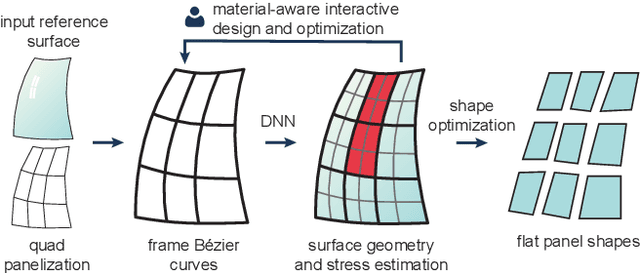
Abstract:Cold bent glass is a promising and cost-efficient method for realizing doubly curved glass fa\c{c}ades. They are produced by attaching planar glass sheets to curved frames and require keeping the occurring stress within safe limits. However, it is very challenging to navigate the design space of cold bent glass panels due to the fragility of the material, which impedes the form-finding for practically feasible and aesthetically pleasing cold bent glass fa\c{c}ades. We propose an interactive, data-driven approach for designing cold bent glass fa\c{c}ades that can be seamlessly integrated into a typical architectural design pipeline. Our method allows non-expert users to interactively edit a parametric surface while providing real-time feedback on the deformed shape and maximum stress of cold bent glass panels. Designs are automatically refined to minimize several fairness criteria while maximal stresses are kept within glass limits. We achieve interactive frame rates by using a differentiable Mixture Density Network trained from more than a million simulations. Given a curved boundary, our regression model is capable of handling multistable configurations and accurately predicting the equilibrium shape of the panel and its corresponding maximal stress. We show predictions are highly accurate and validate our results with a physical realization of a cold bent glass surface.
An Adaptive Approach for Automated Grapevine Phenotyping using VGG-based Convolutional Neural Networks
Nov 23, 2018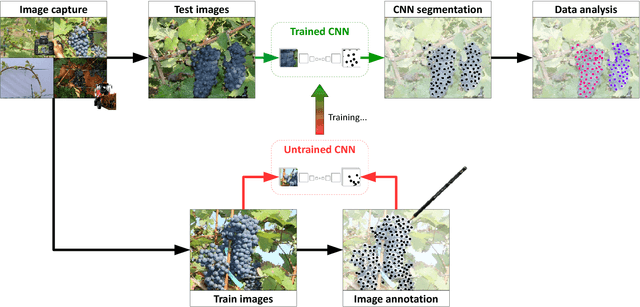
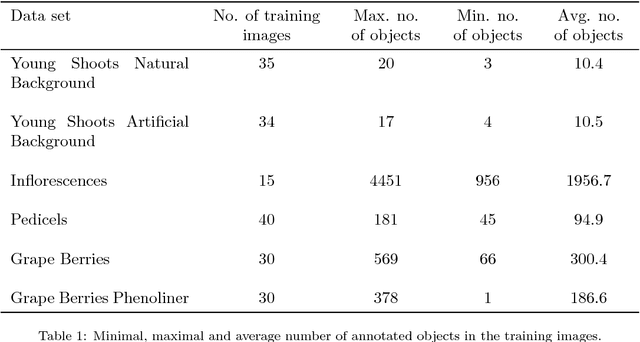
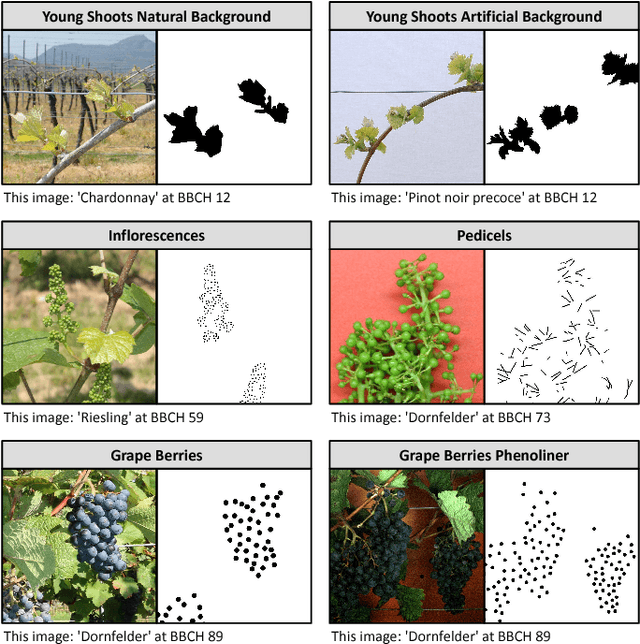
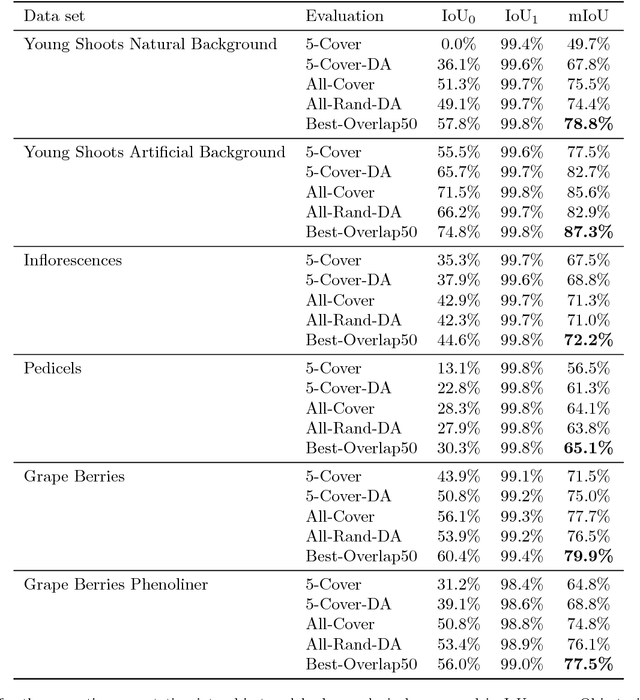
Abstract:In (grapevine) breeding programs and research, periodic phenotyping and multi-year monitoring of different grapevine traits, like growth or yield, is needed especially in the field. This demand imply objective, precise and automated methods using sensors and adaptive software. This work presents a proof-of-concept analyzing RGB images of different growth stages of grapevines with the aim to detect and quantify promising plant organs which are related to yield. The input images are segmented by a Fully Convolutional Neural Network (FCN) into object and background pixels. The objects are plant organs like young shoots, pedicels, flower buds or grapes, which are principally suitable for yield estimation. In the ground truth of the training images, each object is separately annotated as a connected segment of object pixels, which enables end-to-end learning of the object features. Based on the CNN-based segmentation, the number of objects is determined by detecting and counting connected components of object pixels using region labeling. In an evaluation on six different data sets, the system achieves an IoU of up to 87.3% for the segmentation and an F1 score of up to 88.6% for the object detection. The reason for the good results is the combination of a powerful CNN architecture and very precise and accurate image annotations.
Multi-View Semantic Labeling of 3D Point Clouds for Automated Plant Phenotyping
May 29, 2018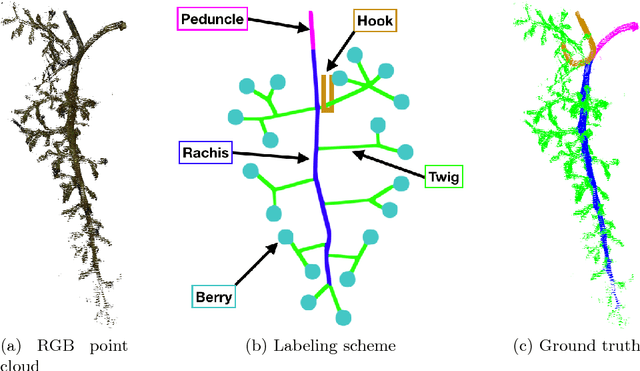

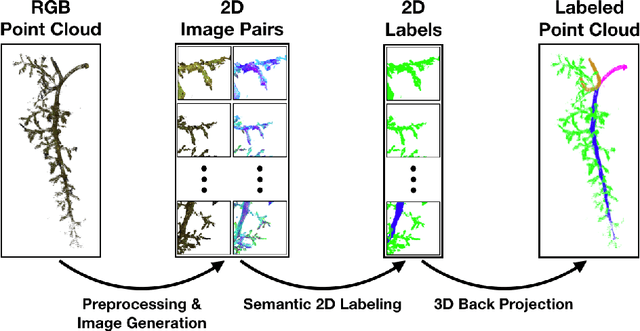

Abstract:Semantic labeling of 3D point clouds is important for the derivation of 3D models from real world scenarios in several economic fields such as building industry, facility management, town planning or heritage conservation. In contrast to these most common applications, we describe in this study the semantic labeling of 3D point clouds derived from plant organs by high-precision scanning. Our approach is optimized for the task of plant phenotyping with its very specific challenges and is employing a deep learning framework. Thereby, we report important experiences concerning detailed parameter initialization and optimization techniques. By evaluating our approach with challenging datasets we achieve state-of-the-art results without difficult and time consuming feature engineering as being necessary in traditional approaches to semantic labeling.
 Add to Chrome
Add to Chrome Add to Firefox
Add to Firefox Add to Edge
Add to Edge